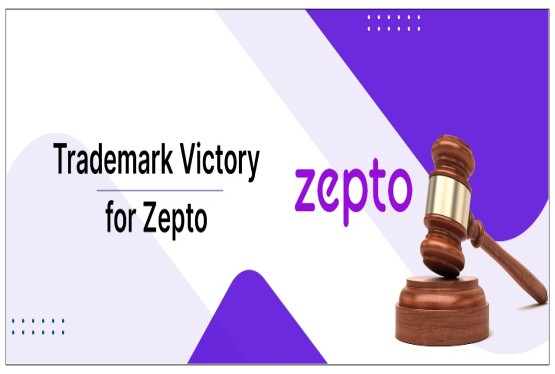Whether you are planning to transfer the ownership of your registered trademark, or you are on the other side of the table buying one, you need to understand how trademark assignment works, and what should be your take to make it official. In this article, we will discuss in brief the meaning of trademark assignment, the different ways it can be done, and the step-by-step guide to making it official by registering it with the Trademark office.
What is a Trademark Assignment?
Just like copyright or any other intellectual property, a trademark can be assigned as well. The trademark proprietor has several exclusive rights associated with the trademark, which also includes the right to license or transfer the ownership of such trademark. The Trademarks Act of 1999 stipulates provisions and conditions for the assignment of a registered trademark.
Trademark Assignment is the transfer of ownership rights, title, and interest associated with a trademark. Such transfer of ownership can be for the entire trademark or a part of it, with or without goodwill. The registered (original) proprietor transferring the ownership of the trademark is called the ‘assignor’ and the new proprietor, who becomes entitled by such an assignment, is called the ‘assignee’. In the case of a registered trademark, the assignment of such a trademark is required to be notified to the Trademark Registry.
Who can assign a trademark?
Any person who is a registered proprietor of a trademark has the power to assign such trademark for any consideration as it deems fit to the contracting parties, i.e., the assignor and the assignee. Hence, only the person or entity officially registered as the owner of the trademark has the authority to assign or transfer ownership of such trademark.
Different types of trademark assignment
The trademark assignment can be carried out in four different ways: -
-
Complete or Full Assignment: In a complete assignment of a trademark, the assignor transfers every right associated with such trademark. The ownership of the assignor is transferred to the assignee along with all the exclusive rights.
-
Specific or Partial Assignment: As the name suggests, under partial assignment there is a transfer of rights for only some of the goods or services covered by the trademark.
-
Assignment with Goodwill: Goodwill is the intangible value associated with a trademark, which includes customer loyalty, recognition of the brand, and market reputation. The Act allows for the assignment of a trademark with or without goodwill.
Hence, where a trademark is assigned with goodwill, the assignor passes on the trademark as well as the intangible value associated with the trademark.
-
Assignment without Goodwill: Assignment without goodwill, also known as Gross goodwill. Such assignments involve the transfer of just the trademark rights, which is less common and can sometimes be problematic as it limits the assignee's user rights and prevents them from using the brand name on products or services currently in use by the assignor.
Trademark assignment agreement
A trademark assignment is a mechanism by which ownership rights associated with a mark are transferred from one entity (assignor) to another entity (assignee). Depending on the conditions of the transaction, the transfer of ownership can be for the entire trademark or a part of it, with or without goodwill.
A trademark assignment is usually undertaken by agreement between the assignor and the assignee. It lays down the scope of the assignment such as the details of both parties, description of trademark, consideration, the effective date of the assignment -whether specified future date or contingent, representations and warranties, jurisdiction, dispute resolution, and other particulars. In India, it is required to record the assignment in the trademark register.
Registration process of assignment for a registered trademark
Once your trademark assignment agreement for a registered mark is duly executed, your trademark assignment is required to be registered with the Trademark Registry Office. Here is the step-by-step registration process of assignment for a registered trademark: -
-
An application for the assignment of a registered trademark has to be made in Form TM-P, along with the prescribed fees, i.e., INR 10,000 for physical filing, and INR 9000 for E-filing. It can be made either by the assignor (registered proprietor), or the assignee (the new proprietor). Do not forget to mention if the assignment is made with or without goodwill.
-
Attest all the requisite/required documents purporting to transfer the title in the trademark such as a certified copy of the original document, instrument or deed, trademark certificate, NOC from the assignor and assignee, etc.
-
Once the application is complete, file it with the Trademark Registry Office. The filing needs to be done within a span of six months from the date of obtaining the proprietorship, or within three months of the extended period, if any, but not exceeding that.
-
The Registrar shall dispose of an application made under Rule 75 within three months from the date of application and notify the applicant regarding the same.
-
The registrar shall specify how the trademark assignment will be advertised. A copy of the trademark assignment advertisement along with the Registrar’s direction on it should be submitted.
-
The Registrar may ask the assignee to furnish any proof or additional proof of title if he thinks it is necessary.
-
Once the Registrar is satisfied with all documentation, he shall issue a certificate or a notification in writing of approval of such assignment.
-
After the approval from the Registrar, the name and address of the assignee i.e., the new proprietor of the trademark, date of the assignment, and other particulars will be entered in the register.
Conclusion
Transfer of ownership of a registered trademark, known as trademark assignment, plays a significant role in intellectual property management. A trademark assignment can be advantageous and fruitful for both the assignor and the assignee, especially if carried out with utmost vigilance. It is important for both the assignor and assignee to take each step carefully when executing the assignment. A thorough consideration of the rights of both parties, terms that need to be included in the assignment agreement, the effective date of the assignment, representations and warranties, jurisdiction, dispute resolution, and other particulars require careful consideration and preparation, and it is advisable to seek professional assistance.
Whether you are the one who is assigning or the one who is receiving, it is equally important for both parties to adhere to the rules on registration of assignment laid down by the Trademarks Act, 1999, and Trademarks Rules, 2017. A failure to comply with these rules can render the assignment invalid, and it can also lead to the cancellation of your trademark registration.
How can Compliance Calendar LLP help?
Compliance Calendar LLP (CCL) offers valuable support throughout the trademark assignment process. We have a team of Trademark Agents/ Attorneys who will first have a discovery call with you to understand your requirement for trademark assignment and accordingly will help you right from the assessment and drafting of the trademark assignment deed to filing with the Trademark Registry Office. We ensure that all the legal requirements and formalities are met. For more information or assistance, please contact us.
Frequently Asked Questions
Q1. Who is the assignor?
Ans. The registered (original) proprietor of a trademark who transfers the ownership of such trademark is known as an ‘assignor.’
Q2. Is it possible to assign my trademark without the goodwill?
Ans. Yes! An assignment of a trademark can be made with or without goodwill.
Q3. Is it necessary to update the trademark register after assigning my trademark to someone else?
Ans. Yes, it is required to notify the Trademark Registry Office with the new proprietor's information to prevent cancellation of your trademark registration.
Q4. How long does it take for the Registrar to dispose of an assignment application?
Ans. The Registrar shall dispose of an application within three months from the date of application.
Q5. What is the fee for registration of trademark assignment?
Ans. For registration of trademark assignment with the Trademark Registry, you can make an application through Form TM-P. The prescribed fee is INR 10,000 for physical filing and INR 9000 for E-filing.
Q6. What is the time limit for filing a trademark assignment application?
Ans. The application should be filed within six months from the date of obtaining proprietorship.
Q7. What is the validity of a registered trademark?
Ans. A registered trademark initially lasts for 10 years from the date of registration. However, the Act provides for the trademark renewal from time to time.
Q8. How can Compliance Calendar LLP assist in the Trademark Assignment?
Ans. At Compliance Calendar LLP, we have a team of Trademark Agents/ Attorneys who will first have a discovery call with you to understand your requirement for trademark assignments and accordingly will help you right from the assessment and drafting of the trademark assignment deed to filing with the Trademark Registry Office. If you have any questions, you may contact us at info@ccoffice.in or connect at 9988424211.






























_(b)_of_the_Trademark_Act,_1999_(1)_crop10_thumb.jpg)



_crop10_thumb.jpg)




























_crop10_thumb.jpg)
_crop10_thumb.jpg)






_crop10_thumb.jpg)








_crop10_thumb.jpg)



_crop10_thumb.jpg)





























_crop10_thumb.jpg)
















_crop10_thumb.jpg)






_crop10_thumb.jpg)












































































































































_crop10_thumb.jpg)




































_crop10_thumb.jpg)












_crop10_thumb.jpg)















































_crop10_thumb.jpg)
























































































